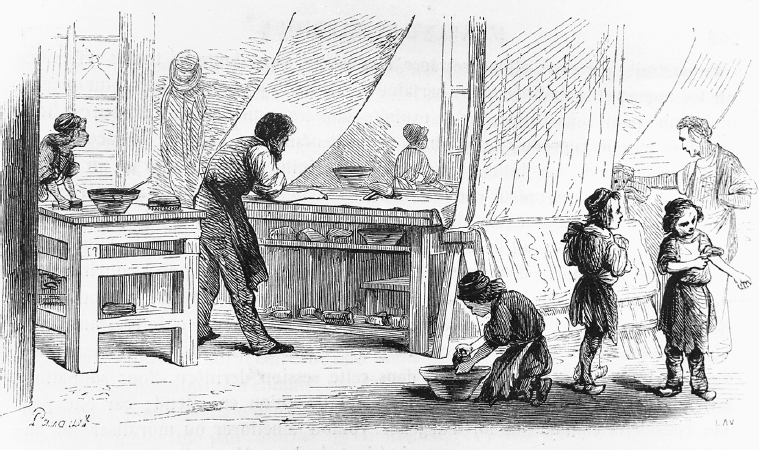Sources for Western Society: Printed Page 330
| 20-6 | | Child Labor in an Industrial Age |
| The Child of the Factory (1842) |
Child labor was neither a novelty nor a product of the Industrial Revolution; children in traditional agricultural societies were (and are) put to work as soon as they were capable of contributing to the family economy. Yet the circumstances associated with industrialization, in particular the factory system of labor organization, focused public attention on the phenomenon as never before—first in Britain and then, as the illustration suggests, in continental Europe. The consequence, again beginning in Britain, was a humanitarian outcry leading to legislation limiting and eventually prohibiting child labor in factories. This illustration accompanied an article written about children in the cotton textile industry in France.

From Les Français Peints par Eux-Mêmes: Encyclopédie Morale du Dix-Neuvième Siècle, vol. 1 (Paris: L. Curmer, 1841), p. 257. Bibliothèque des Arts Decoratifs, Paris, France/Archives Charmet/The Bridgeman Art Library.
READING QUESTIONS
Question
On what grounds might contemporaries, including many members of the working class, have defended child labor?
Question
Are all of the children depicted in the illustration actually working? If not, then why might they be in the factory?